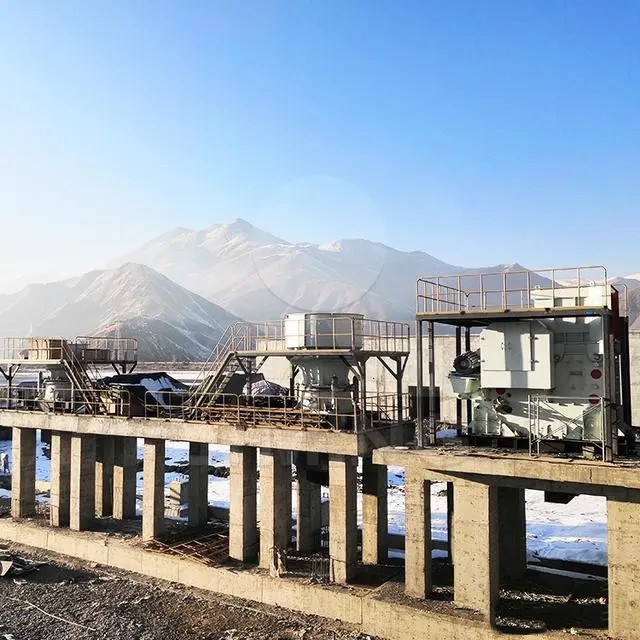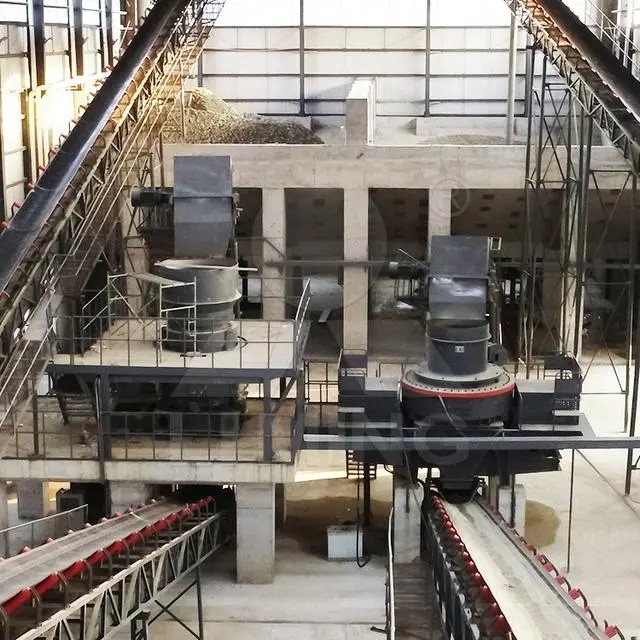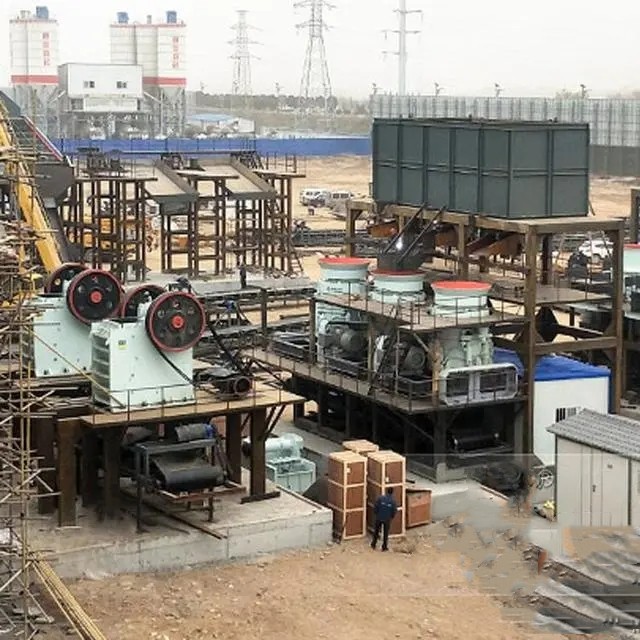Introduction to the advantages and disadvantages of different crusher combinations in sand and gravel aggregate production lines
crusher
jaw crusher
impact crusher
cone crusher
The crusher is the main core equipment of the entire sand and gravel aggregate production line, with different forms of machines such as coarse crushing (jaw crusher), medium and fine crushing (cone crusher/impact crusher/hammer crusher), and integral sand making (impact crusher). In the production of sand and gravel aggregates, they usually appear in the form of combinations and are applied in different stages of crushing.

From the production requirements of raw materials, output, size of incoming and outflow materials, as well as the site situation and financial situation, there are also different combinations of crushers in the sand aggregate production line. The following are several common crusher combinations.
1. Single stage hammer crusher system
Advantages: simple process, convenient operation and management, less land, low project investment, low energy consumption per unit product.
Disadvantages: the proportion of product varieties is not easy to adjust, poor applicability to ore, narrow scope of application; The particle shape of the product is poor, the amount of fine powder is large, the product acquisition rate is low, and the dust collection air volume is large. The consumption of wear parts is high, and the late investment is large.
2. Jaw crusher+impact crusher system
Advantages: Multiple specifications, capable of large-scale production, with a wide range of applications; The product variety ratio is easy to adjust, with good particle shape and less powder; Strong adaptability to materials with moderate wear index.
Disadvantages: Poor adaptability to materials with high wear index, moderate acquisition rate of coarse aggregate, higher consumption of wear parts compared to cone crushers, and higher energy consumption per unit product.

3. Jaw crusher+cone crusher system
Advantages: The proportion of product varieties is easy to adjust; Suitable for materials with high wear index; The product has a good particle shape, a small amount of fine powder, and a high rate of obtaining coarse aggregate; Low energy consumption per unit product; Low consumption of worn parts.
Disadvantages: When the system capacity is large, it requires three stages of crushing or multiple crushers, which can lead to complex processes and high project investment; Compared with the impact crusher system, the scope of application is narrow.
4. Jaw crusher+impact crusher/cone crusher+impact crusher (sand making machine) system
This system is based on the jaw crusher+impact crusher/cone crusher system, and an additional impact crusher is added to form a three-stage crushing. The function of an impact crusher is to shape the crushed stone aggregate, and at the same time, it can further crush stones, melon seeds, stone powder, etc. into machine made sand.
In addition to the advantages of a jaw breaking+counterattack breaking/cone breaking system, this combination form can also produce machine-made sand, improving the particle size and quality of crushed stones. Its disadvantage is the addition of primary crushing equipment, resulting in increased initial investment and high total investment.

5. Jaw crusher+cone crusher+cone crusher system
This system is based on the combination of a jaw crusher and a cone crusher system, with an additional cone crusher added to form a three stage crusher.
This combination form not only has the advantages of a jaw breaking+cone breaking system, but also has the advantage of improving the overall production capacity, making it suitable for large-scale hard rock crushing production lines. Its disadvantage is the addition of primary crushing equipment, resulting in increased initial investment and high total investment.
The above are several common crusher combinations in the sand and gravel aggregate production line, which can be changed according to the actual production situation.
 O'zbek
O'zbek slovenský
slovenský Azərbaycan
Azərbaycan Қазақ
Қазақ Latine
Latine ລາວ
ລາວ български
български नेपाली
नेपाली فارسی
فارسی Javanese
Javanese Українська
Українська Lietuvos
Lietuvos Română
Română Slovenski
Slovenski پښتو
پښتو Punjabi
Punjabi Bosanski
Bosanski Malti
Malti Galego
Galego Afrikaans
Afrikaans Esperanto
Esperanto 简体中文
简体中文 Српски
Српски मराठी
मराठी Ελληνικά
Ελληνικά čeština
čeština Polski
Polski ไทย
ไทย Nederlands
Nederlands Italiano
Italiano Tiếng Việt
Tiếng Việt Deutsch
Deutsch français
français русский
русский Português
Português Español
Español 한국어
한국어 Svenska
Svenska Malay
Malay اردو
اردو norsk
norsk Indonesia
Indonesia عربى
عربى Gaeilge
Gaeilge Türk
Türk Pilipino
Pilipino हिन्दी
हिन्दी Dansk
Dansk বাংলা
বাংলা English
English


What is a Metering Conveyor
In modern material handling systems, efficiency and precision are critical to maintaining smooth operations. Among the many specialized conveyors used in industries such as packaging, food processing, mining, and logistics, the metering conveyor plays a vital role. But what exactly is a metering conveyor, and why is it becoming increasingly important in production environments?
Read MoreJuli Engineering Gains Global Recognition Among Mining Conveyor Manufacturers
The mining industry relies heavily on efficient material handling systems to ensure productivity and safety in large-scale operations. Among the many solutions available, mining conveyors stand out as indispensable equipment for transporting bulk materials such as ore, coal, and aggregates. As demand for advanced solutions grows, Juli Engineering has established itself as one of the most reliable mining conveyor manufacturers, offering durable, high-performance systems tailored to global mining needs.
Read MoreDesign and Application of a Comprehensive Coal Spillage Handling System for Downwards Transportation Belt Conveyor
A belt conveyor with an annual production capacity of 3 million tons is installed in a main inclined roadway with a steep angle of 22°. During operation, issues such as coal overflow, spillage, and falling coal occur, particularly when transporting raw coal with high moisture content.
Read More